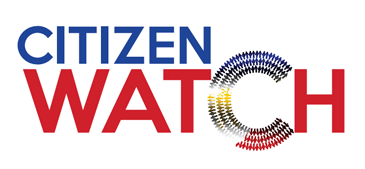Rethinking restrictive regulation
February 8, 2021by Orlando Oxales originally published in The Manila Standard
“Building a safe and vibrant digital marketplace is a symbiotic concern of all e-commerce stakeholders.”
The new e-Commerce Roadmap recently launched by the Department of Trade and Industry sets an optimistic tone for the potential of e-commerce growth in the country. Experts project that the sector will pump in P1.2 trillion into the economy by 2022.
Secretary Ramon Lopez said: “As our economy recovers from the pandemic, we can harness the fast-growing e-commerce in the country to boost our economic growth.”
However, the sudden surge in online transactions has also seen a sharp spike in complaints from unsatisfied consumers causing mistrust and a growing clamor for redress mechanisms. Hence the impetus to craft a new regulatory framework for e-commerce players.
Such a framework is now being proposed under the Internet Transactions Act (ITA) so defined in Senate Bill 1591 as “An Act promoting online transactions, safeguarding the rights of consumers and merchants, and for other purposes.”
As a consumer advocate and a regular online shopper, I have been following the progress of this important legislation as this will affect not just the e-commerce platforms but all stakeholders of the digital economy. The following are some of my observations:
The first is on defining what an e-commerce platform is and is not. The ITA bill attempts to capture a diverse e-commerce landscape under one definition. Just go to a search engine to search for an item you are shopping for and you’ll see what I mean.
The big shopping platforms like Lazada, Shopee, Zalora, the branded online stores, and even supermarkets and malls have their own integrated platforms with all the needed commerce and business functionalities. In other words, after you confirm your order, whether pre-paid or cash on delivery, your goods will arrive via a courier service in due time.
Then there are platforms that are more like product listings or online classified ads like Carousell and Facebook Marketplace where buyer and seller will need to work the transaction details. These are just like printed classified ads where the newspaper plays no role in the transaction and never liable for deals that went bad from their ads. Something the ITA proposes to impose to all the platforms.
There are as many permutations as there are diverse products and services being offered online but, in all cases, the objective is to make a good deal based on each consumer need and preference. Technology has made this dynamism viable and is what makes the e-commerce sector so competitive and innovative.
This raises the question on whether crafting a catch-all regulatory regime that would compel all online commerce actors to act the same way as brick-and-mortar establishment will work. Or, whether a more nuanced approach with customized rules adaptable to distinctions between platform models, for let’s say each e-commerce sub-sector may be more responsive and more enabling for our e-economy to flourish.
The second observation is about cross-border trade implications as the ITA will require all e-commerce entities whether platforms, merchants, or sellers to register and have a license to operate before they will be allowed to engage in e-commerce. This would be problematic as it will raise jurisdictional, compliance, and enforcement issues. Can this be implemented unilaterally? Come to think of it, how about the sellers on platforms like Amazon? Does this mean we cannot access these platforms unless their sellers are registered and licensed? What if these countries do the same thing for Filipino merchants trying to get into their online market?
Adding bureaucratic barriers will always raise costs and will stifle the dynamic energy of the digital marketplace. Diversity is what makes the e-commerce sector so competitive and quick to innovate. Our legislators should consider a pause in deliberations to understand the regulatory models of developed economies with robust e-commerce industries and how they managed, or even allowed its multiplicity to take-off at great speed.
We’re actually having an e-commerce boom right now without any new regulation. With that thought, safely navigating the risks of the digital marketplace is a matter of practicing the same shopping sense when venturing into the “tiangge” or an unfamiliar shop.
The less-than-ideal consumer protections is a significant problem but there are other barriers to e-commerce growth such as the need to improve internet connectivity, building a robust digital infrastructure, and the largely unbanked population. A game changer would be a well implemented national ID system integrated in every establishment.
E-commerce is a lifesaver not just for those who lost their livelihood in this deep recession but for all of us fighting to survive this pandemic. Building a safe and vibrant digital marketplace is a symbiotic concern of all e-commerce stakeholders.
For now, I believe a clever social marketing campaign on safe online shopping and responsible online entrepreneurship may be more effective while legislators and regulators are trying to catch up with an industry operating at lightning speed.
